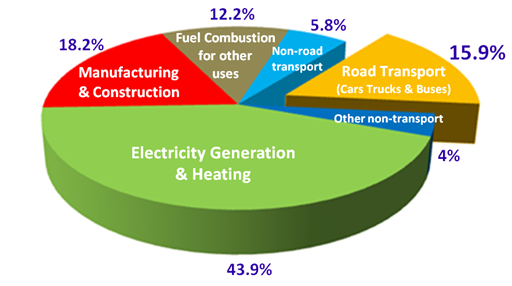WHO data show that almost all of the global population (99%) breathe air that exceeds WHO guideline limits and contains high levels of pollutants, with low- and middle-income countries suffering from the highest exposures.
Electrifying the future: adapting the EV experience for developing nations

According to International Organization of Motor Vehicle Manufacturers, globally, road transport is responsible for about 16% of man-made CO2 emissions. Electrification of road transport is seen as a multipronged tool to deal with some of the world’s pressing issues such as air pollution and climate change. But for real impact, developing countries need to be part of the evolution to EVs .
Yet more than 95% of EV sales are concentrated in China, Europe and USA with battery electric vehicle (BEV) and plug-in hybrid electric vehicles (PHEV) penetration rates around 26%, 20% and 7% in 2022 respectively. In contrast, developing countries in Asia, Latin America and Africa have EV penetration rates of below 1%, significantly lower than the global average of 13%.

Vehicles adapted for emerging economies
Due to a multitude of technological, infrastructural, financial and attitudinal challenges, critics have found defensible arguments against the adoption of EVs in developing countries such as high price and limited charging capabilities. However, a recent analysis of 20 developing countries by the World Bank2. demonstrated a strong economic case for accelerated EV adoption in many countries. For some categories of vehicles – especially electric buses, electric two-wheeled vehicles and electric three-wheeled vehicles, the savings in fuel costs and maintenance costs offset a higher initial purchase price. When the additional environmental and health benefits of reducing transport emissions are monetized, it makes an even more favorable case for incorporating more such electrified vehicles in developing-country transport systems. The International Energy Agency3 also recommended that electrification of road transport in emerging and developing economies should prioritise two/three-wheelers and urban buses, as these vehicle types are most cost competitive.
Many people in developing countries use buses and three-wheeled vehicles as a mode of public transport. Therefore, electrifying these will add to the benefits that normally accompany public transport such as reduced traffic congestion and less stress for the commuter by ensuring a greater environmental win.
The adoption of electric two wheelers is also regarded as a viable option given that it is an important mode of transport with a small operating radius and can be best charged at home given the limited public charging infrastructure in developing countries.
In addition, the demographic profile of many of these countries especially India, Indonesia, Philippines and Vietnam is marked by a young median age which can support the use of electric two-wheelers due to their relative affordability, trendiness and ability to easily to navigate through traffic jams.
As in any other part of the world, to be truly transformational, the effort to promote electrification in developing countries must go hand in hand with the shift towards renewable electricity supply and improving the reliability of electricity distribution grids due to increased load from electrified vehicles.
Manufacturers see the opportunity

While many international OEMs such as Tesla are looking for a foothold in emerging countries, Chinese companies like BYD and Chery Automobile have already built inroads in the Southeast Asian markets such as Thailand and Indonesia. These companies and others are setting up manufacturing plants across the region and are playing to affordability demanded by emerging market consumers.
There is also a rise of homegrown EV companies which are increasingly able to compete with international manufacturers through vertical integration.
Companies such as Ola Electric, one of India’s largest electric vehicles companies which currently has electric two-wheelers as its product offering, recently unveiled India’s first indigenously developed lithium-ion cell, NMC 2170 (referring to cylinder cell measuring at 21 millimeters by 70 millimeters).
The state of the art uses NMC on the cathode side; and graphite and silicon on the anode side. The use of specific chemistry and materials enables the cell to pack more energy in a given space and also improves the overall life cycle of the cell. Built in-house, Ola plans to begin the mass production of its cell from its upcoming gigafactory in 2023.
Electrification can only help curtail the issue of climate change when it reaches a certain scale. The world’s population growth has become increasingly concentrated in developing countries. According to estimates from UNCTAD4, the share of people living in developing countries has increased from 66% in 1950 to 83% now and is set to reach 86% by 2050. Given such a skewed population distribution, EVs must have a significant presence in these countries, to make a dent on climate change globally.

